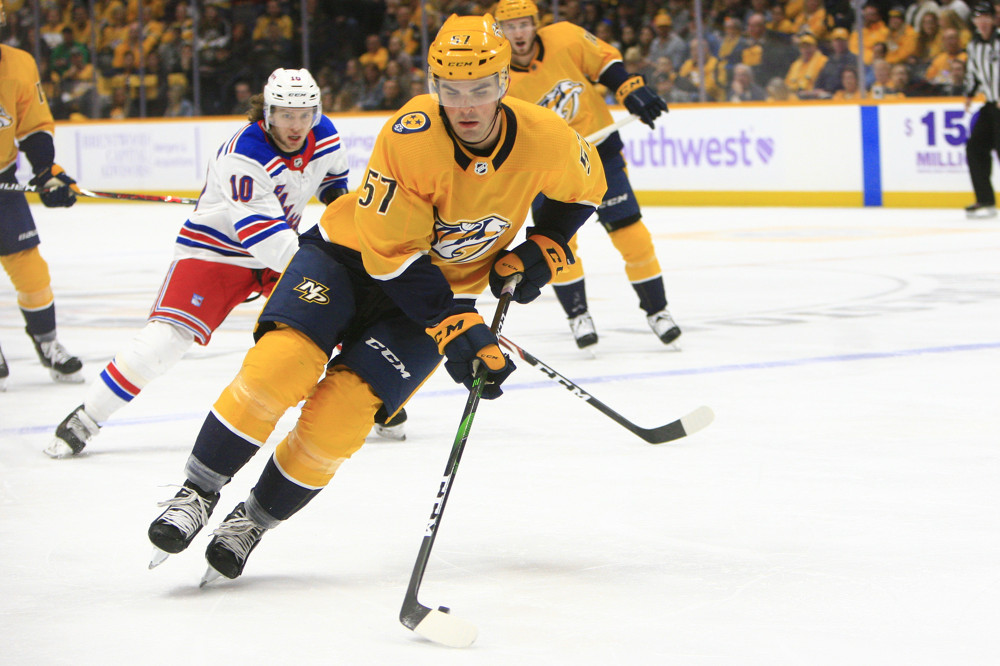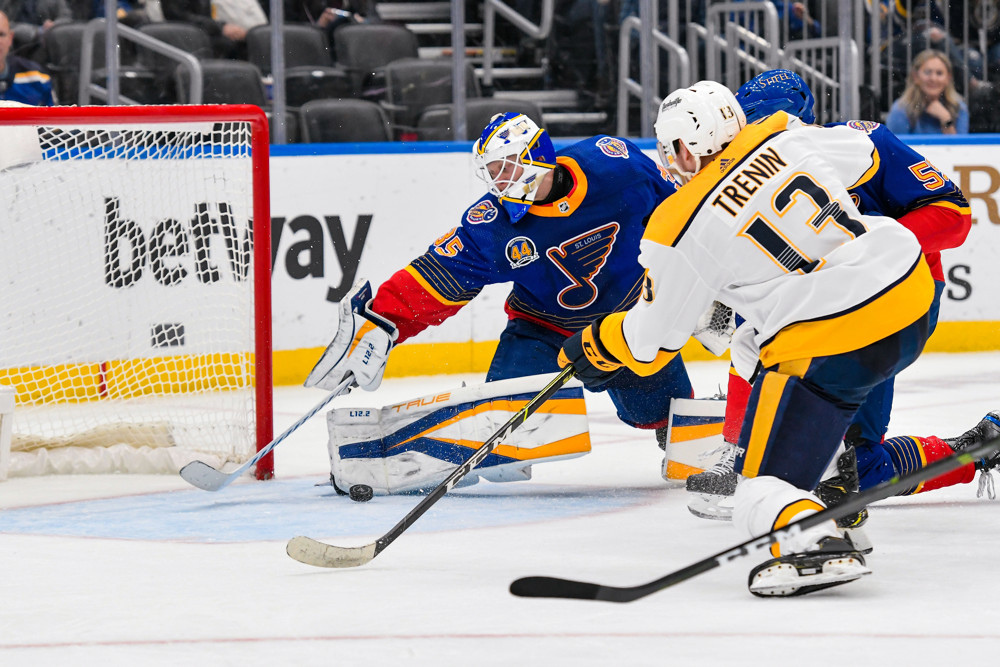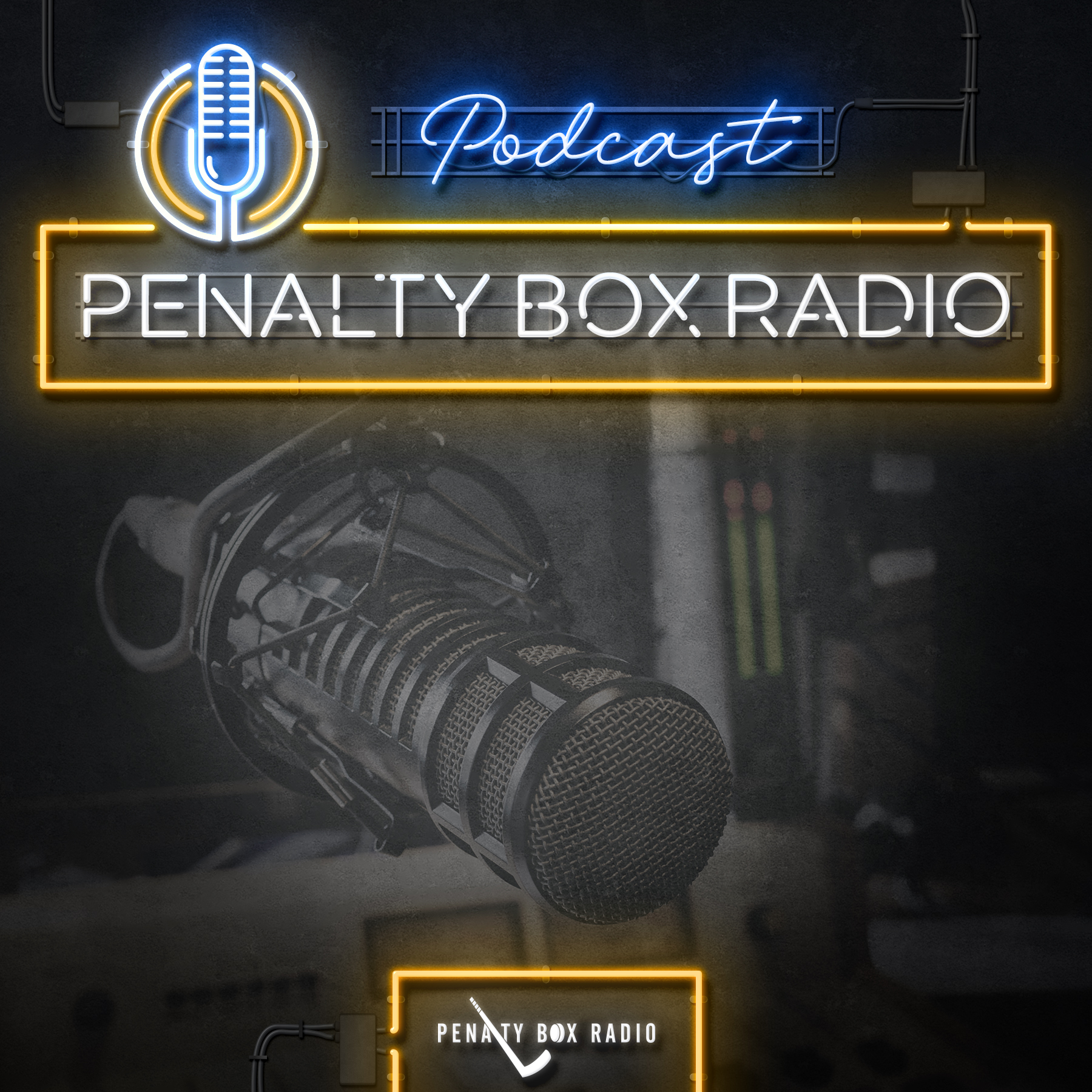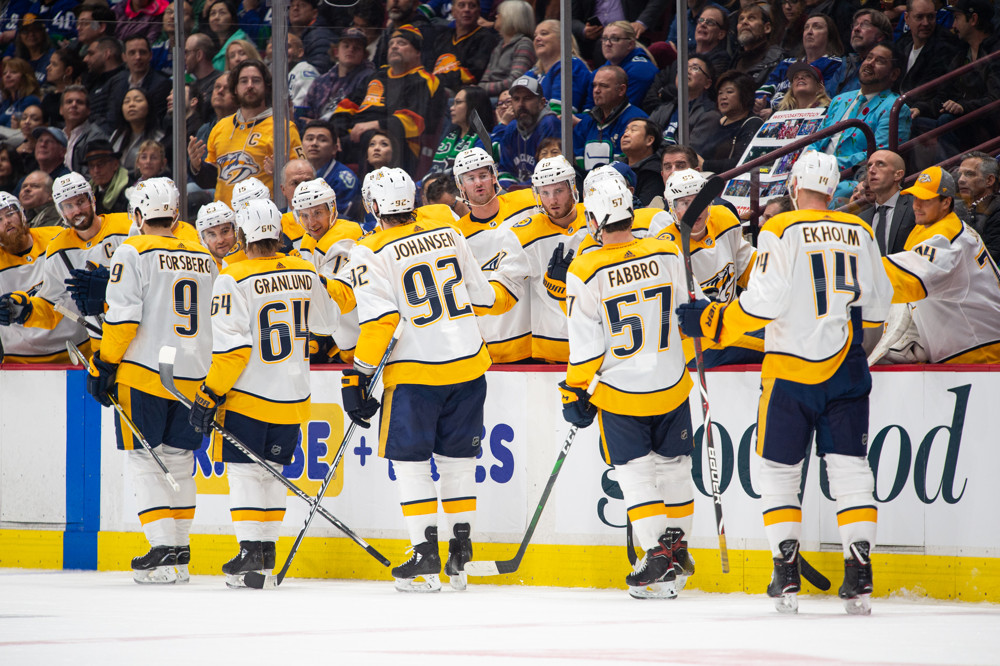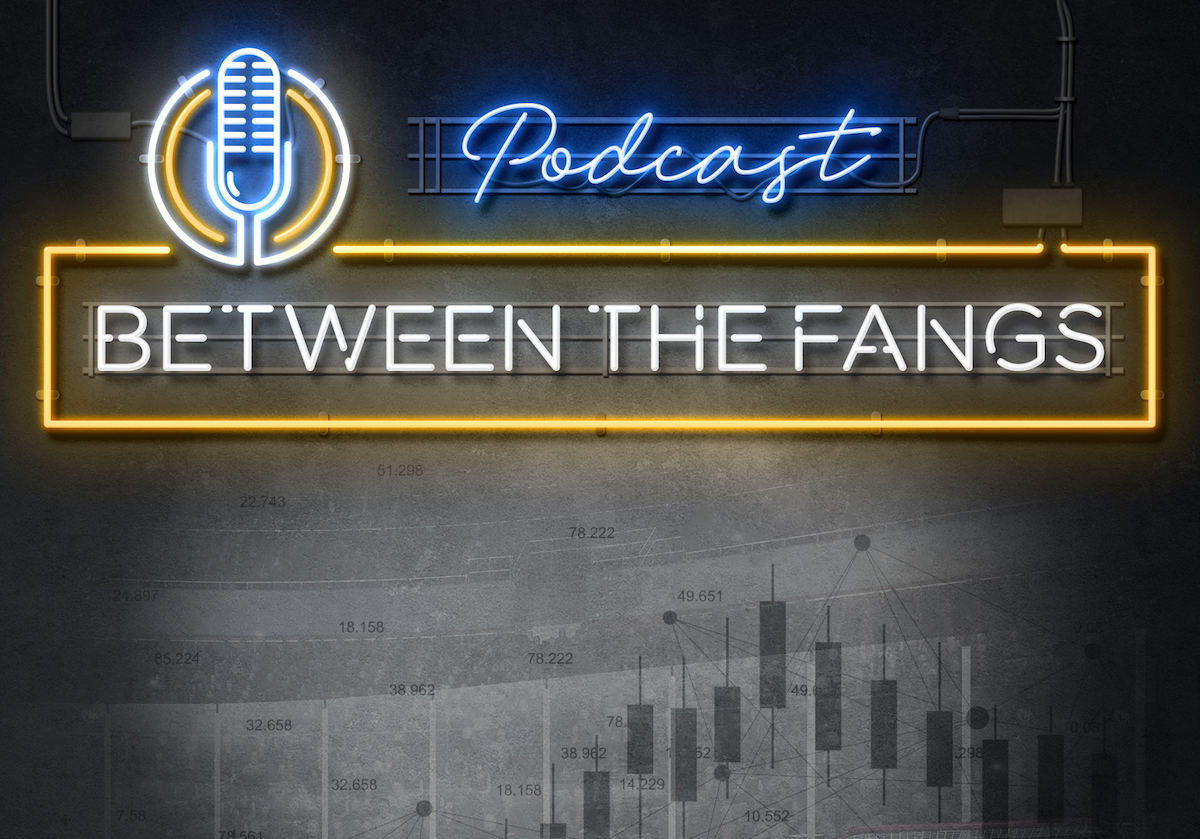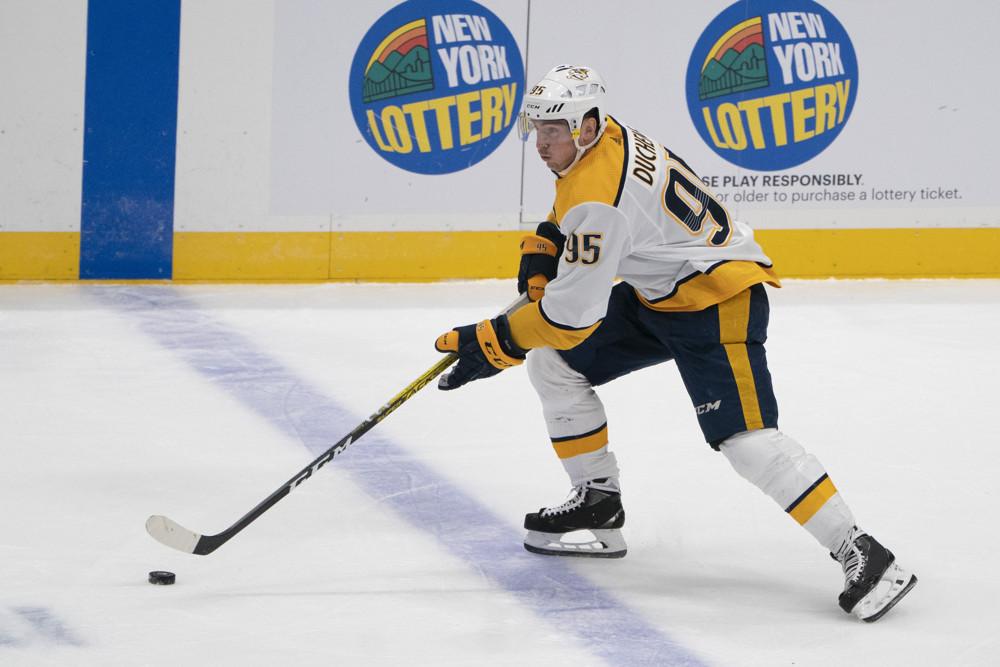
The Nashville Predators are no strangers to exciting defensemen. Especially in a league whose teams so desperately crave puck moving talent at the blue line, it’s no small feat that Nashville has produced the most points by defensemen of any team over the past three seasons. The margin (45 more points than the second-place San Jose Sharks) is not exactly small either.
While the Predators have featured their fair share of elite defensive talent, they also haven’t been afraid to let it go. Dealing Seth Jones, Shea Weber, and P.K. Subban would make very little sense for most NHL teams. Nashville, though, has a nice habit of shrugging off the negative effects of these losses and carrying on as before.

The most recent addition to this head-turning group of players is NHL rookie Dante Fabbro. The right-handed defenseman, who played his college hockey at Boston University, made his NHL debut with just four games remaining in the 2018-19 regular season. His performance in the playoffs may be one of the few fond memories by fans of the disastrous postseason; he managed to be a possession-positive player through six games that were, at the team level, catastrophic.
His performance was impressive enough to influence the decision to trade away P.K. Subban in the offseason. In the words of general manager David Poile:
“I probably wouldn’t have made [the Subban] trade if Dante Fabbro hadn’t signed with the Predators and hadn’t played as well as he did.”
Judgement aside, that is a very gutsy decision to base (at least partially) on a ten-game sample size from a 21 year old.
So far, so mediocre
Unfortunately, Fabbro has not performed as admirably in the first several games of his first full NHL season.
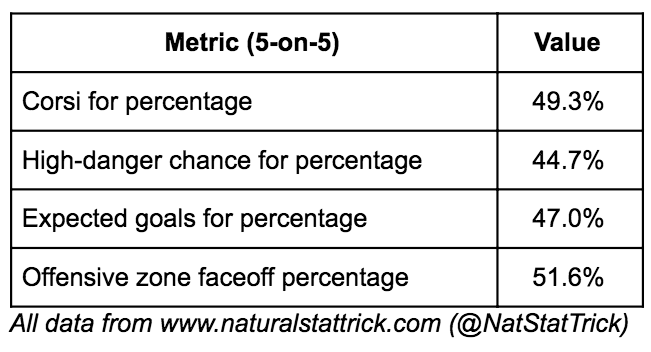
This is far from a comprehensive portrait, but the simple fact remains that Fabbro has been a negative possession player, while receiving one of the friendliest zone deployments on the team.

To get a better picture of Fabbro’s performance this season, we can turn to the really great data being collected by PBR’s own George Matarangas (@GeorgeM1019 on Twitter). These data include transitions, puck battles, and high-danger passing at both ends of the ice. For Fabbro, George has collected data from 15 games so far. “Good” values would be those above 50%.
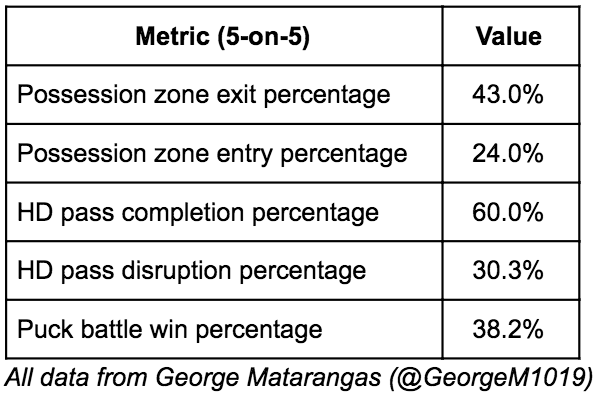
This is bad news. Aside from his rate of completing high-danger passes to teammates, of which he has attempted extremely few, he is not doing much to help Nashville maintain possession of the puck.
You might be saying about now that Fabbro is a rookie defenseman, and he is not expected to be excellent in any of these categories during his first NHL season.

You’d be right to point his rookie status out as a huge caveat, but it doesn’t excuse these numbers either. In the categories of expected goals for percentage and high-danger scoring chance for percentage, he is below-average among rookie defensemen this season.
The half-full glass
There are a couple of reasons to be optimistic. Although the sample size for this season is still pretty small, Fabbro has been trending up in both of these categories.
Another key element of Fabbro’s performance is his quality of competition (QoC). In other words, the skill level of players Fabbro faces while he is on the ice. There are prominent members of the hockey analytics community who have cautioned against heavily weighting QoC, such as Micah Blake McCurdy of www.hockeyviz.com:
“[Quality of competition] matters, on average, about three or four times less than quality of teammates does, even after you take into account how you have five opponents at 5v5 but only four teammates.”
Still, I consider it an important piece of context to consider when analyzing the performance of players. As expected, thanks to his assignment next to Mattias Ekholm (and confirmed by data from www.puckiq.com), Fabbro has faced slightly easier competition than any of Nashville’s other top four, but significantly more difficult competition than Yannick Weber, Dan Hamhuis, or Matt Irwin.
What to do
Because of the generally poor quality of Nashville’s bottom defensive pair, as well as a dearth of NHL-ready defensemen in the AHL’s Milwaukee Admirals roster, there really isn’t another option for Peter Laviolette. He could pair Fabbro with Roman Josi or Dan Hamhuis, but the former option would leave him exposed as Josi activates offensively, and the latter would require Yannick Weber to play top-four minutes.
Top four minutes and high quality of competition for a rookie defensemen are a tall order. By trends in some of his possession metrics, it appears that Fabbro is generally improving with each game. He’s far from a Calder caliber player, but Nashville’s newest addition to its elite defensive corps is still very much a strength of the team. Furthermore, he’s more or less its only option to fill that position.
I would not be surprised to see Nashville apply its surplus of centers in a trade for a middling-level defensemen. However, at the moment, I can’t point to one that exists and would likely be available. I anticipate Dante Fabbro’s role to remain consistent for the next several months.
He needs to improve in several areas, most notably in his transition game. That said, fans needn’t worry at this point.


